It was more than 25 years ago, but I still remember it like it was yesterday. There I was, standing in the fly shop at Last Chance Lodge & Outfitters, trying to figure out where in the world I was going to take my clients fishing the next day.
My options were limited. The Henry’s Fork was toast, as the powers-that-be were in the process of completely emptying Island Park Reservoir. The water coming through the dam looked like mud. Across the Montana border, the Madison was dead. It hadn’t fished worth a damn in weeks. So was the Yellowstone in the Park, and the Firehole, and the Gibbon. Slough Creek and the Lamar were actually holding up pretty well, but they were a solid two hour drive in one direction. We could make the long trek as a last resort, but four hours in the truck was more than most clients would sign on for.
I was talking to Lynn Sessions, Steve “Mac” McFarland and a handful of other guides — hell, we were all scratching our heads about where to go — when Braide, Lynn’s son, walked into the shop just as the light was fading from the western sky. He must have been 10 or 11 years old at the time, and he had this huge grin on his face. I heard him say something like, “Man, we catched ‘em. Big ones. They almost drug me in the river.” and I couldn’t help myself. I turned my back on the conservation with Lynn and Mac and focused my complete and undivided attention on Braide.
It was a mystery, right? Braide couldn’t drive. He wasn’t old enough. Which meant that he was either walking or riding his bike to the spot where he was catching all these big fish. How was that even possible? So I grabbed him, steered him back out on the porch, and went through a series of questions.
Was he catching trout or something else?
More Like This
Trout.
On flies?
Yup.
Was he fishing one of the local ponds?
Nope.
The river?
Yep.
Where? After all, it was nothing but mud.
And that’s where I was wrong. The Buffalo River dumps 200 c.f.s. of spring water into the Henry’s Fork right at the top of the Box Canyon. According to Braide, there was a clear water strip extending from the mouth of the Buffalo downstream for a half mile or more. And not surprisingly, it sounded like every big fish in the Box had moved into that narrow slice of cold, clean water.
Mac and I were up there at first light, and we honestly couldn’t believe how good it was. We were back at the shop by 8 am, and it turns out that our clients had a day for the ages. They just smoked those big rainbows. Over the course of the next few weeks we guided and/or fished it every day, until the word finally got out and more anglers started showing up. The fishing was so good that it was literally unbelievable. I landed a couple of eight pound rainbows in between guide trips, and lost some that were bigger, and I had one day when I caught eight fish on eight consecutive casts, with the smallest running about 16 inches and the largest topping six pounds.
Looking back, I learned three vital lessons that September. First, given the opportunity, trout will sniff out clear water when the river blows out. Second, the biggest fish love to hold right on the mix line, where they can eat food that’s tumbling down in the dirty water. Third, it’s important to know what’s actually in that dirty water. We had dead chubs and suckers from Island Park Reservoir floating downstream in the chocolate-colored Henry’s Fork, and anyone high-sticking a white or grey marabou streamer along the mud line was going to have the time of his or her life.
Oh, and lest I forget, I learned one other important thing that September. Always listen to Braide.




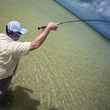
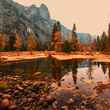




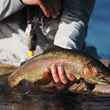



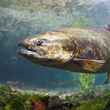




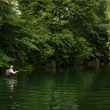



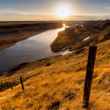
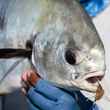



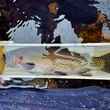
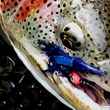
Comments
John replied on Permalink
Will exploiting 10-year-old's fishing spots via guide trips, and wailing on fish which are seeking refuge be tactics that you teach at the School of Trout?
Todd Tanner replied on Permalink
Rather than responding in kind to your snark, John, let’s use this as a teaching moment. If memory serves, Braide was stoked that he saved the day and that he contributed to the success of his father’s business. And I think we all enjoyed giving him the kudos he so richly deserved. After all, it’s not every day that a kid figures out something that has the grown-ups stumped. If there’s a lesson here, it’s that we shouldn’t give in to prejudice and simply dismiss people who are younger or less experienced than ourselves.
With regard to your concern for those fish, and your view of guide trips as a form of exploitation … those are definitely issues worthy of discussion. Should we be paying guides to help us catch fish? Do those guides have a responsibility to the resource as well as a duty to provide the service that their clients are paying for? If so, how should they resolve any conflicts that might arise? Is it even okay for us to catch fish? Is it okay to practice catch & release? If it is okay for us to catch fish, and to release them, are there situations where we shouldn’t even try? If so, who makes those decisions? What are the parameters and the constraints? Do we codify those parameters with regulations, or do we take a different approach?
There are a million shades of gray involved in fly fishing. At the end of the day, we are intentionally imposing our will on other living creatures in order to satisfy our egos and connect with an older, far more predatory version of the human experience. Is that ethical? Is it morally defensible? Is it something that we should bring out into the light, and look at, and talk about? Or is it something that we should ignore, just as we ignore so many other elements of modern human existence?
Those are all questions worthy of our consideration.
With regard to the School of Trout … my hope is that our students will have an opportunity to immerse themselves in fly fishing, and learn from some of the most respected anglers on the planet, and hopefully reach the point where they can make intelligent, informed decisions concerning the myriad questions we should be asking ourselves every single day.
John replied on Permalink
Todd, thanks for responding. Here's my trouble. You said this in the article:
"Over the course of the next few weeks we guided and/or fished it every day, until the word finally got out and more anglers started showing up."
You ask, is it morally defensible to torture fish in the name of fun? My take is that everyone has to measure that for themselves, but I would argue that fishing a half mile stretch of river for more than four hours of a day is a bit excessive in a lot of scenarios, even if it's just one person. Fishing it for three weeks straight with multiple people sounds a little much.
I don't fault you for doing what you did back in the day, every fisherman has done something similar, but I do fault you for not mentioning that blowing up a fishing spot is not always right, and that taking multiple people to a certain stretch is not always right. If a respected writer doesn't codify this, then who?
Also, I don't know Braide, but I can't image that a ten year old would rather see a fishing spot bombarded by guides and customers for weeks rather than fish it by himself everyday. I don't think you believe guiding should come before all things, but I do believe someone could take it that way from your message.
At the end of the day, what would those clients think about the ethics of fly fishing? When man cranks up the dam and fishing is limited, it's the trout that pay the price. If guides are teaching clients that catching fish is most important, which is how some are teaching, no matter the detriment to the resource, that doesn't sound like fly fishing anymore. So, I implore you to codify the ethics.
Todd Tanner replied on Permalink
John, I appreciate the more reasonable tone.
That said, one of the issues with writing a short piece like “The Kids Are Alright” for the web is that there’s a lot that goes un-conveyed. My focus was on sharing a few fly fishing tips, and I used an old anecdote to illustrate those tips. Here are some relevant facts that didn’t make it into the story:
The water temperatures were fine.
The water level and turbidity changed on a daily basis, both as the reservoir grew lower & lower, and then again when the dam was shut off completely. The river went from high & muddy, to low & muddy, to very low and clear. The fishery changed dramatically every day or two.
That stretch of river gets hammered, day in and day out, from May through October. There was considerably less pressure on it during the couple weeks I was wrote about than there usually is.
There were far more trout in the canyon than usual, as many of the big fish in Island Park Reservoir dropped down into the river as the water in the reservoir receded.
As the water dropped lower and lower, the fish from the reservoir dispersed downstream for at least 6 or 8 miles.
When the dam was shut off, dozens of local guides and anglers showed up and saved the thousands of fish that were stranded in the pools between the dam and the mouth of the Buffalo.
In any case, with the water too low for the armada of drift boats that usually populate the Box, and with a relatively small number of fishermen compared to the typical army of anglers, there was actually considerably less pressure on those fish than usual. And Braide, and his buddies, continued to fish the Box, and continued to have the time of their lives. It was never crowded, or unpleasant, or problematic.
It’s pretty obvious that the picture in your mind was far different than the reality, and as the writer I bear some responsibility for that difference. After all, I’m the one painting the picture. At the same time, though, you skipped right past any number of questions you could have asked, made a bunch of unwarranted assumptions, and then went directly to snark. In my experience, that’s not typically the best way to go - especially if you want people to listen to you.
So coming full circle, I think the two or three tips I shared can be valuable for other anglers, and I don’t have any issue with the way I fished, or guided, or listened to Braide, back in the autumn of ’92. I’m sorry that didn’t come through in the story. I obviously wasn’t trying to elicit a negative response from you or anyone else.
Stephen Wisner replied on Permalink
I need to weigh in here. I can't speak to fishing the little guy's spot, but Todd tackles that and it sounds like the kid was stoked to help. But, as to the "seeking refuge" that is something that needs to be addressed.
The term "seeking refuge" makes it sound as though these fish would die if they didn't move to the clean water. That was certainly not the case. Trout can survive just fine in dirty run-off. In a lot of rivers, they do it every year, sometimes for extended periods of time. The fish weren't seeking refuge, they were sitting in clearer water where they could see better and eat from the huge smorgasbord that high water creates.
Being a skilled angler means figuring these things out. We go fishing to catch fish. And we exploit their weaknesses. For instance, they show themselves when they eat dry flies and we use this information to figure out which fly to use and exactly where to cast it. And we know that big browns eat in lower light situations, so we wait for cloudy days or night and take advantage of or ability to figure it out. That is called being good at fishing. Being good at fishing is what most people are looking for in a guide.
Sometimes the planets align and fishing (for the person who has figured it out) is really good. If you're a guide, you are being paid to figure it out. It's actually the job. Your clients will be the ones actually fishing, but you need to decide where and how. Every guide needs to decide what he/she is willing to share.
There are certain places that I just don't guide. Ever. But those are my decisions. The Box Canyon is certainly not a secret spot. Those fish get fished day in and day out. In my days guiding the Henry's Fork, I would have had no qualms with giving my clients a shot at some big fish that were eating with reckless abandon. And then we would have let them go.
Todd Tanner replied on Permalink
Thanks, Stephen. As usual, you nailed it.
Pages